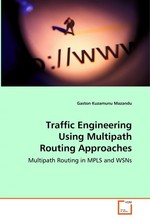It is widely recognized that Traffic engineering (TE) mechanisms have to be added to the IP transport functionalities to provide QoS guarantees while ensuring efficient use of network resources. Traffic engineering is a network management technique which routes traffic to where bandwidth is available in the network to achieve QoS agreements between current and future demands and the available network resources. Multi-path routing has been proven to be a more efficient TE mechanism than Shortest Path First (SPF) routing in terms of profit maximization and resource usage optimization. However the identification of set of paths over which traffic is forwarded from source to the destination and the distribution of traffic among these paths are two issues that have been widely addressed by the IP community but remain an open issue for the emerging generation IP networks. Building upon different frameworks, this work revisits the issue of multi-path routing to present and evaluate the performance of different traffic splitting mechanisms to achieve QoS routing in Multi-Protocol Label Switching (MPLS) and Wireless Sensor Networks (WSNs).
Данное издание не является оригинальным. Книга печатается по технологии принт-он-деманд после получения заказа.


